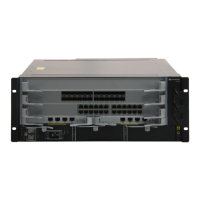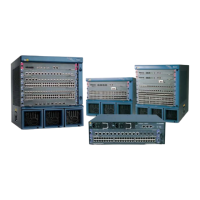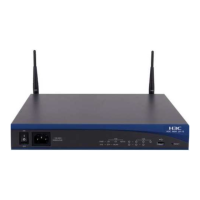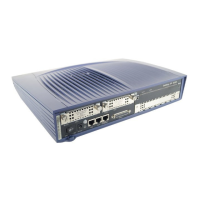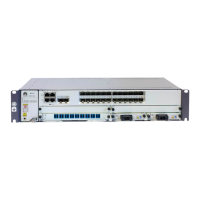GigabitEthernet2/0/0 VLANIF 20 10.1.1.1/24
Loopback1 - 1.1.1.9/32
PE2 GigabitEthernet1/0/0 VLANIF 30 10.2.2.1/24
GigabitEthernet2/0/0 GigabitEthernet2/0/0.1 -
Loopback1 - 3.3.3.9/32
P GigabitEthernet1/0/0 VLANIF 30 10.2.2.2/24
GigabitEthernet2/0/0 VLANIF 20 10.1.1.2/24
Loopback1 - 2.2.2.9/32
CE1 GigabitEthernet1/0/0 VLANIF 10 100.1.1.1/24
CE2 GigabitEthernet1/0/0 VLANIF 10 100.1.1.2/24
Configuration Roadmap
The configuration roadmap is as follows:
1. Configure the routing protocol on devices on the backbone network (PE and P) to
implement interworking and enable MPLS.
2. Use the default tunnel policy to create an LSP and configure the LSP as the tunnel for data
transmission.
3. Enable MPLS L2VPN and create VC connections on the PEs.
4. Configure QinQ sub-interfaces on the PE interfaces connected to the switches and connect
the QinQ sub-interfaces to the VLL network.
5. Configure selective QinQ on the switch interfaces connected to CEs.
Data Preparation
To complete the configuration, you need the following data:
l Name of the remote peer of each PE
l VC ID
l Encapsulation mode of the sub-interfaces and VLANs that the sub-interfaces belong to
Procedure
Step 1 Specify the VLANs that the interfaces of CEs, PEs, and P belong to and set the IP addresses of
the corresponding VLANIF interfaces according to Figure 5-7.
After the configuration, the packets sent from a CE to a switch should contain a VLAN tag.
The configuration procedure is not mentioned.
Step 2 Configure selective QinQ on the interfaces of the switches and specify the VLANs allowed by
the interfaces.
# Configure Switch1.
[Switch1] vlan 100
[Switch1-vlan100] quit
Quidway S7700 Smart Routing Switch
Configuration Guide - Ethernet 5 QinQ Configuration
Issue 01 (2011-07-15) Huawei Proprietary and Confidential
Copyright © Huawei Technologies Co., Ltd.
239

